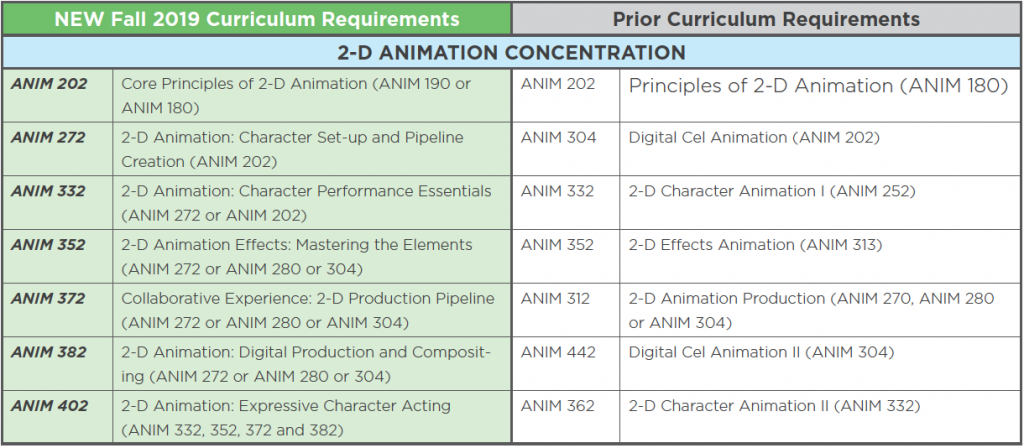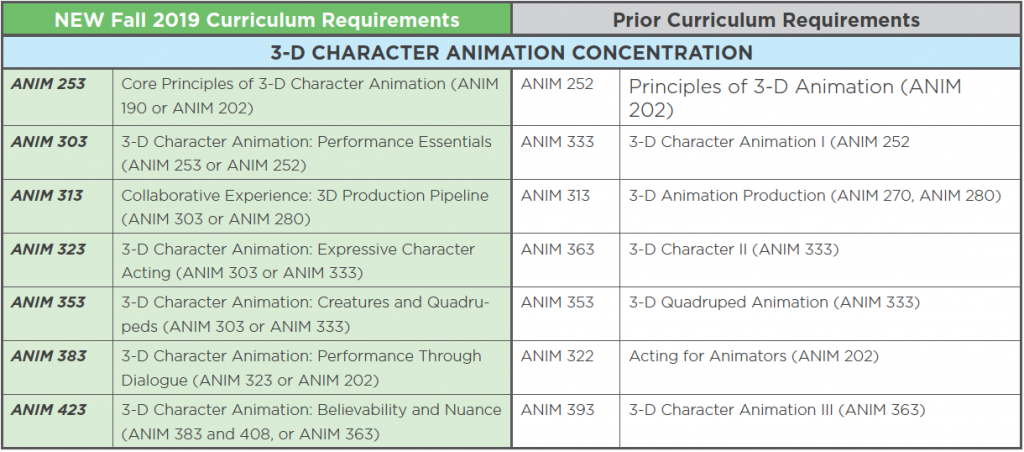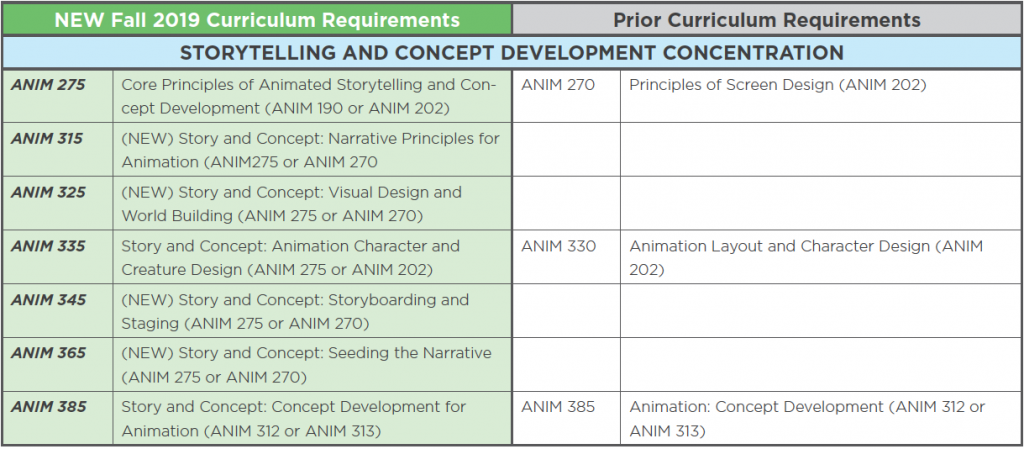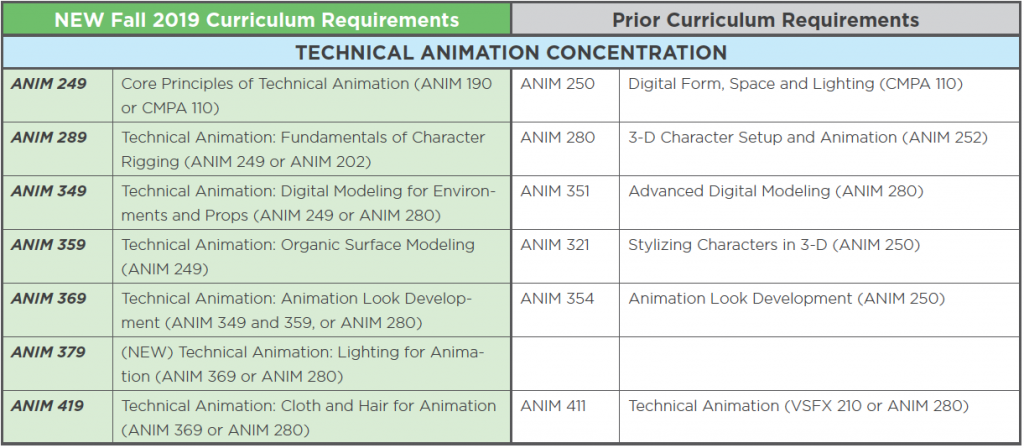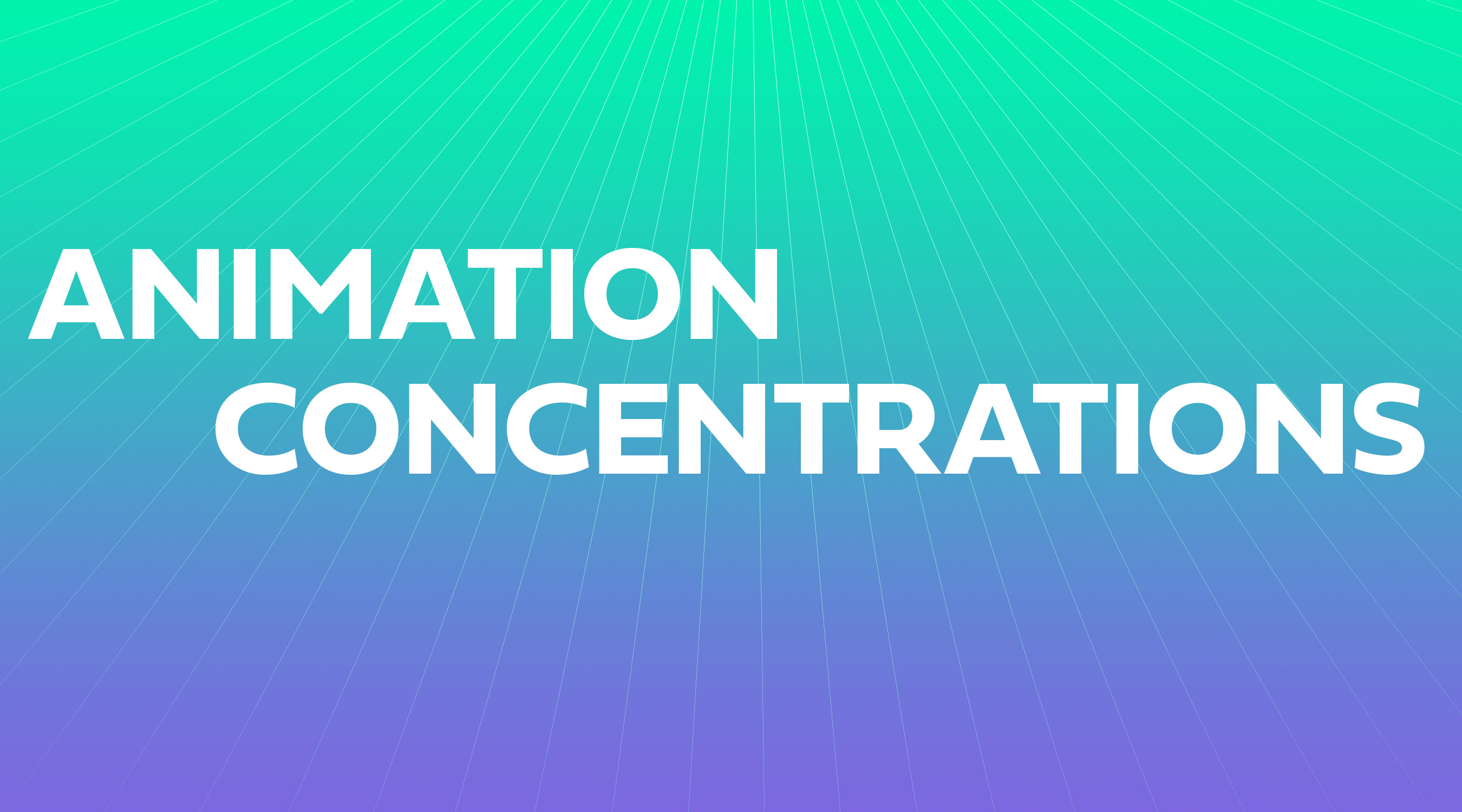ANIM Concentrations
What are concentrations?
A concentration allows you to explore a more specific part of your major. This allows you to learn about more specific topics within your major instead of studying a broad overview. For example, if you are an animation major who is interested in 2D animation, then you would choose the 2D animation concentration. Or, if you are more interested in the technical aspects of 3D animation, then the technical animation concentration would allow you to focus on that.
Concentrations vs. Minors
Both minors and concentrations are valuable parts of your college education. A concentration allows you to specialize in a certain portion of your major, while having a minor allows you to explore aspects related to your major or something completely different. Generally, students can have both a concentration and a minor.
Types of Concentrations
There are 4 different concentrations for the animation major.
-2-D Animation: If you are interested in 2D animation, then this may be the appropriate concentration for you. It covers all aspects of 2D animation, ranging from character performances, 2D puppeting and 2D rigging.
-3-D Character Animation: 3D Character Animation is explored by students in order to create a realistic performance.
-Storytelling & Concept Development: This concentration is more about pre-production, focusing on building themes, characters and worlds while advancing the storytelling
-Technical Animation: The more technical aspects of the 3D pipeline are the focus of this concentration. Students will work on look development, lighting, modeling, rigging and scripting.
Course Substitutions & Credits
Extra class credits cannot be earned for your major if you have already taken the prior curriculum’s equivalent. For example, if you have already taken ANIM 252 then you will not receive extra credits towards the major if you take the new curriculum’s equivalent, ANIM 289. However, they may count towards your electives. Speaking with your advisor will help you get a better idea of how your credit hours will transfer to the new curriculum or if they can be used as electives.
Class substitution varies by student. If you are concerned about classes counting towards your credit hours, speak with your advisor to see if they fill any electives.
Should You Make the Switch?
If you have been enrolled in SCAD within the past 5 years, you do not have to switch over to the new curriculum. However depending on your status, it might be beneficial for you to switch over. If you are close to graduation and want to stay on schedule, then it may not be in your best interest to change to the new curriculum. Changing may cause you to take extra courses in order to meet graduation requirements.
If you’re in the middle of your time at SCAD, switching over to the new curriculum may be possible and beneficial. Your courses may fill elective requirements or meet major credits. It is best to check with your advisor regarding your credits, waivers and substitutions.
If you are a freshman, now would be the easiest time to switch over to the new curriculum. Still, it is recommended to check with your advisor before making a decision.
Below are the course equivalency charts for each concentration.
